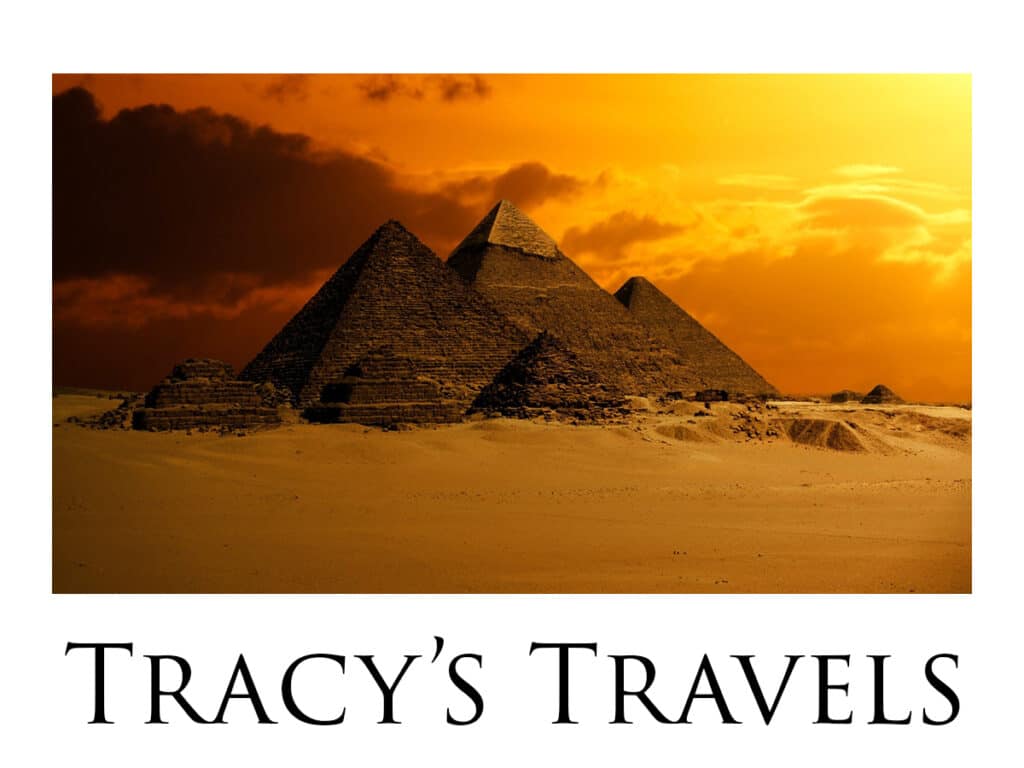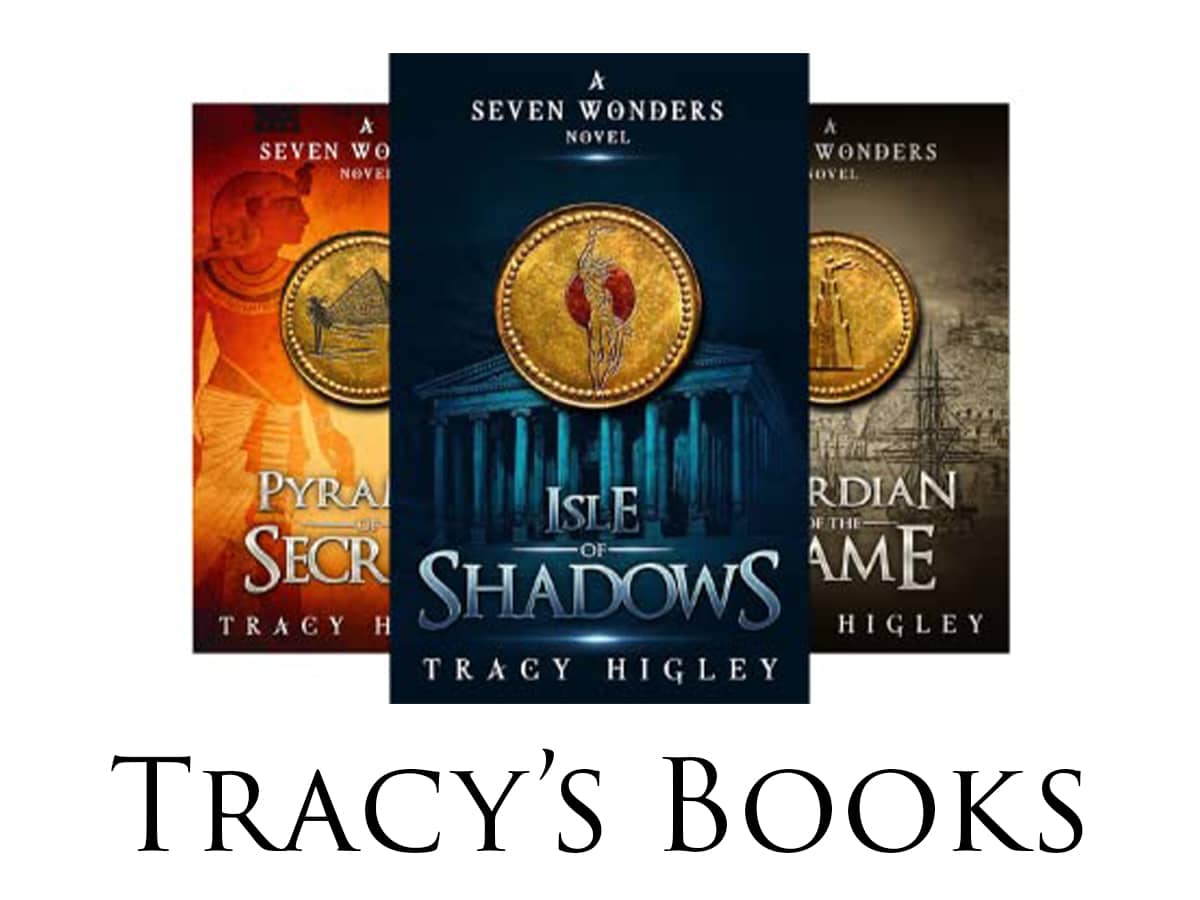The fascinating city of Luxor, Egypt and the Valley of the Kings, is the setting for scenes from Awakening, as well as The Time Travel Journals of Sahara Aldridge.
Follow my travels and research through the scenes of these novels.
If you haven’t read these novels yet, feel free to enjoy my travel journal—there are no spoilers here!
Egypt, here we come!

We start with a drive to JFK airport, discover a cancelled flight, get re-routed through Rome, where Ron’s luggage is lost. On to Cairo, then another flight to Luxor, Egypt and finally a cab ride to our hotel. It feels like we’ve been traveling for days, and we’ve barely begun. But we are here! In the cab, we stop at a light and hear the call to prayer echoing through the streets, our first real indication that we are not in the West any longer. We pass a boy beating a donkey with a stick, speed along the Nile, and get our first glimpse of the Luxor Temple. The traffic is crazy. Different smells, different sounds. I am jet-lagged, but anxious to begin our adventure tomorrow!
Dusty Nile

Egypt is a very different experience than Greece. I didn’t realize as I traveled through Greece that even though the culture felt different, there was still much of the west in it. Here in the Middle East, I feel completely displaced. Everything about the way people look, speak and act feels different. Sitting beside the Nile eating breakfast, looking across at groves of palm trees, Ron comments that they look dusty, and I realize that I’ve been thinking that there was something odd about the view, too. It looks almost like an aged painting of palm trees at the riverside, as if the whole scene has been colorwashed to give it an ancient texture and appearance. We breakfast on cheeses, olives, pomegranate, Egyptian beans, and split three huge oranges between us. Even the oranges are different, with a smoother skin.
Banana Plantation

After breakfast we arrange for a cab driver for the day, and set out to explore. Through the city streets of Luxor, Egypt, we pass donkeys everywhere, and men in robes and turbans. We cross the Nile and drive through sugar cane fields and banana plantations, and watch a huge team of oxen plow a field. The poverty and dust strikes me more than anything. Our cab driver honks his horn about a hundred times during this journey – some kind of signal that it will take us days to eventually figure out. He is careful with his car, swerving to avoid puddles caused by irrigating fields and driving onto the shoulder when he fears another car might splash his.
Colossi of Memnon

Our first stop is the Colossi of Memnon, where a turbaned gentleman explains the history of the place thoroughly, calling us Nefartari and Ramses and insisting on snapping some photos.
Baksheesh?

He doesn’t appear to be an official tour guide, and we soon discover that he expects a tip, baksheesh for his trouble with us. We try to tip him, but he seems disgusted with the 50 piastres we offer and turns it down. We’re still getting the hang of the money exchange!
Hatshepsut’s Temple

Back into the cab and onto Hatshepsut’s Temple. Our driver leaves us in the parking lot and we begin the trek toward the temple. This amazing structure is half-cut into the limestone cliff face. Egypt’s only female Pharaoh held powerful sway over the country and commanded one of the most incredible mortuary temples, which looks out over the valley toward the city.
Exploring the Temple

We take a small shuttle to the base of the temple ramp, then begin the climb. The sun is growing hot in spite of being December. There are children on field trips singing as they walk. We encounter a tourist police officer, who suggests he take our picture, and then asks for money. He seems unhappy with the amount again, although this time I offered one pound.
Part of the cliff

The temple emerges from the cliff face almost as though it has always been there. By carving herself into the cliff face, she somehow becomes part of it, and you feel impressed by her immensity, though part of it is borrowed from nature herself.
Temple paintings

We wander the temple for awhile, most impressed by the still-preserved colors of the painting.
View from the Temple

On the way out we must run the gauntlet of souvenir vendors, one whom offers three basalt statues of Bastet, Nefartiti and Tut for 100 pounds. We decline politely and keep walking, and the price continues to go down as we walk until he is calling “20 pounds” after us. He also offered to trade his mother and 1000 camels for me. I’m not sure if this is a good deal or not, but Ron declines.
Deir el Medina

Back into the cab, we wind through limestone cliffs toward the Valley of the Kings. We make a stop first at the Village of the Laborers, which would have been similar to the workmen’s village I have created in Pyramid of Secrets.
Workmen’s Village

The village has one main road, with narrower alleys, and the roofs of the homes are gone. There is a temple here, the Temple Habu, which is very large with beautiful paintings. An Egyptian man offers to remove some rocks blocking the steps so we can climb to see the “panorama” from the roof. More baksheesh is exchanged, of course.
Howard Carter’s house

We drive past the house of Howard Carter, the archaeologist who discovered the tomb of King Tutankhamun and spent twelve years here cataloguing the finds.
Valley of the Kings model

At the Valley of the Kings we first wander the visitor center. The most interesting item there is a Plexiglass model of the valley, which you can look beneath to see all the tombs that have been discovered.
Valley of the Kings

We head out into the valley and begin to explore. Not all of the tombs are open, but we venture into many. In each tomb we encounter men who want to explain the colorful paintings and then receive a tip. They all act like our money is not nearly enough, as if we have highly insulted them, but from the guidebooks I am fairly certain this is an act. We run into some Australians and ask them how much they tip, and they emphatically tell us NO TIPS! Still, we sometimes give a little if they have been very informative or helpful inside. The entire valley is blinding white – bright sun on white rocks, but towering behind are the orange-red cliffs, whose opposite side contains Hatshepsut’s Temple.
King Tut!

It’s a very steep climb to the tomb of Thutmosis III, and his is the farthest we visit. We get a picture outside King Tut’s tomb.
Riding out of the Valley

On the shuttle ride back to the parking lot, two young men who have been working at a digsite in the Valley and are now presumably on their lunch break, engage me in conversation. Every question begins with “Lady,” and when they hop off the shuttle with a “Goodbye, Lady,” Ron says “what about me?” I’m realizing that my blonde hair and blue eyes are an oddity here, and attracting attention.
Hassle Free Zone?

We are finished with our driver for the day, and get dropped off at the Luxor Temple. We wander up and down Cornice el-Nil, the street along the Nile, for awhile, trying to find a restaurant the tour book recommends, and being accosted by people selling souvenirs, offering taxi rides, caleche (carriage) rides, felucca rides on the Nile, restaurants, tours, and probably other things we don’t slow down to hear. They are relentless. The average salesman has to be told about fifteen to twenty time “no thanks – la shukran” before he will leave us alone. We keep walking, and they keep following, saying “listen, listen” behind us. It becomes exhausting. We passed a sign that calls Luxor the “Hassle Free Zone” and have to laugh.
Winter Palace Hotel

We finally decide on our late lunch at the Winter Palace Hotel on the Nile, which has been around for many years and hosted Agatha Christie, presumably when she came to do research for Death on the Nile. There is something cool about also being here for research for my novel, and eating at the hotel where she stayed.
Felucca

After our late lunch it is nearly 4:30. Although it’s been quite warm today, it is December, and the sun is beginning to set. We decide on a sunset felucca ride, and head back to the spot where we were offered a ride by several entrepreneurs. We settle on a price (which he afterward insisted was for one person, when we were certain he said two), and climb into the boat.
Sunset on the Nile

A felucca is a narrow boat with bench seats along the side, and room for about ten people. We are the only passengers on the Sandra in the Sun, which is run by one man, with another to help him. Our trip down the Nile and back lasts two hours, but the boat moves slowly, and the distance covered is very short. Our two sailors entertain us with conversation, information, Arabic music, and hot hibiscus tea. The sun sets, the Nile grows dark, and the moon rises, a sliver over the water. The breeze grows a bit chilly as we return to the lights of Luxor. I mention that tomorrow is my birthday, and they try to convince us to let them arrange a big party on their boat with people we don’t know. They also guess my age at 25 (ha!) and I remember that Egyptian men enjoy flattering women. It has been a relaxing and delightful way to close a busy day of touring.
Caleche ride

Back on the street, the Cornice el-Nil, we find a caleche and get a ride back to our hotel. The driver insists that Ron join him for awhile on his seat, and take the reins. The horse’s name is Susie, he tells us, and I realize that the people here take great pride in the things that they own – the taxi driver keeping his car clear of splashing water, the felucca owner who tells us several times “I hope you like my boat,” which he has named for his mother, and now the caleche driver with a horse he is proud of.
Wonderful things!

The people are very friendly here, and we’ve had many men say “Ah, America, friends,” when they hear where we’re from, but I suspect that much of the friendliness is rooted in strategy – they have found ways to get tourists to stop, to buy, to pay more, to tip higher. We eat a light, late dinner at the hotel and end the day. It’s been exhausting, but incredible. I think of the famous quote by Howard Carter, discoverer of Tut’s tomb, when he first peered through a slit into that treasure trove. When asked if he saw anything, he whispered, “Yes, wonderful things!” I must agree. Tomorrow, the temples of Luxor and Karnak.
Happy Birthday to me!

Day 2. The most amusing thing happens when we exit our hotel this morning. A group of men are sitting outside the entrance with instruments, and as soon as we walk out they strike up a tune for us, assuredly hoping for some kind of baksheesh.We walk across the lot, away from them, but as we walk it strikes me what song they are playing. It is “Happy Birthday,” and today is indeed my birthday! A delightful coincidence.
[Update: it is not until literally years later that I realize this was not a coincidence at all. My blond hair made me very noticeable at this hotel, and word got out that it was my birthday. These men were no doubt hoping for a tip. I still feel bad about not giving them one!]
Karnak Temple

Outside the Karnak Temple Complex, which is immense (covering 100 acres), we encounter some men offering to be guides. This time I welcome the idea, and when a gentleman approaches us and mentions all the areas he will show us, I can tell that he is knowledgeable. Plus he speaks English well enough to be easily understood. We start to barter for a price, and he cuts us off. Sahmir says 50 pounds (about $9.00) when we are finished, if he “delights our heart,” and 40 if he doesn’t. (At the end of our 90-minute tour we give him 60. He was definitely delightful!)
Amazing architecture

The Karnak Temple complex evolved over a period of centuries, with various pharaohs adding to it as they came to power. We are overwhelmed by the gorgeous architecture, the hieroglyphs, obelisks, sacred lake, and dozens of alcoves and rooms.
Another ride

After Karnak, we take a caleche a few miles to the Luxor Temple in Luxor, Egypt. The driver tries to get money for the horse again, which we refuse. But when we try to pay him the 15 pounds we agreed upon with a 20-pound note, he insists he has no change and we must let him keep the 20 pounds. In American money it’s an extra dollar, so I feel guilty resenting it. But being taken advantage of is always annoying.
Luxor Temple

At the Luxor Temple in Luxor, Egypt, I find that I once again get lots of attention from old and young, presumably because I am a blonde American. Groups of school kids pass and all of them say hello to me. Ron gets upset when I smile and wave at a group of teenage boys calling to me, but he says hello to every little girl who greets him. After one hello to a boy, however, the boy asks Ron “what’s her name?”
Columns at Luxor

The Luxor Temple is just as grand, if not as large, as the Karnak Temple. I love the way the light caught on this picture.
Luxor from the Street

Everyone we encounter seems bent on getting us to head to the Egyptian market. The cooperation is interesting to me. They want you to spend your money here, even if it doesn’t go to them. Apparently the Egyptian market is having a special “One Day Only” sale on Wednesday. Oh, and then again on Thursday. I am growing cynical, I am afraid. We walk the Cornice el-Nil for awhile again. Our felucca man from last night spots us, waves, and wishes me a happy birthday.
Friendly Egyptians

When we are ready to return to the hotel we find a caleche being pulled by a large horse, with a smaller, apprentice horse attached. The driver has a young apprentice too, a boy about seven years old who has all the tourist-pleasing patter you’d expect from his father. The driver offers to take a picture of Ron and me, and the little boy pulls me close with a “Let me love you, my friend.” Halfway back to the hotel, he asks Ron how many camels he’d take for his wife. Almost to the hotel and he mentions my lovely smile. We reach the hotel and he asks for 5 pounds to go to school. I’m amassing quite a list of ways I’ve been flattered here. I’ve been called by the name of Nefartiti (reputedly Egypt’s most beautiful queen) and Mut (sky goddess). I’ve been waved to, winked at, called to, smiled at, hugged, had my age guessed wrong, offered to have camels traded for me, and talked to when Ron is ignored. A girl could get used to this.
Off to the airport

Our time in Luxor, Egypt (Upper Egypt) has come to an end, and we head to the Luxor airport for a quick, one-hour flight to Cairo. We take a cab to the hotel and check in. A few minutes after settling into our room, Amir calls from the front desk where he has just checked us in. He tells me he has called simply to wish me a happy birthday. Wow. Later in the evening when I approach the concierge desk to ask a question another of the hotel staff wishes me a happy birthday. I feel like a celebrity! We go to the business center and check email, and I find more than a dozen birthday greetings from friends and family.
Tomorrow, the Pyramids. I’m beyond excited.







